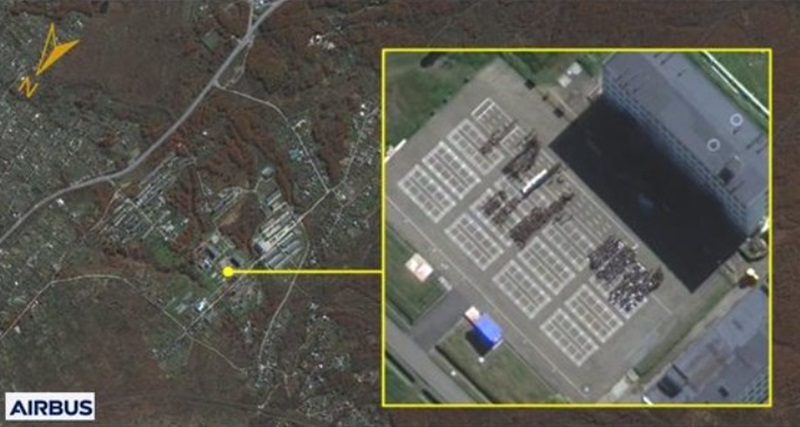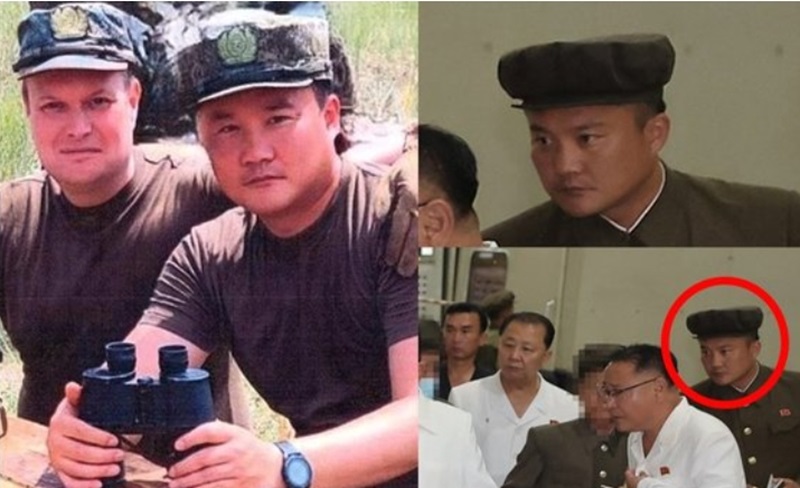The National Intelligence Service (NIS) announced on October 18 that North Korea began moving its most elite troops for deployment to Russia starting from October 8.
This marks the first instance of North Korea sending large-scale ground troops abroad. The deployment is expected to impact the South Korean government’s policy, which has so far been limited to providing non-lethal aid to Ukraine, due to the ongoing consideration of diplomatic relations with Russia.
Following this development, South Korea’s President Yoon Suk Yeol convened an emergency security meeting, where the Presidential Office stated, “We will not overlook this situation and will use all available means in cooperation with the international community to respond firmly.”

According to the NIS press release, North Korean forces began transporting special forces to Russia between October 8 and 13, using Russian Navy transport ships. The South Korea’s spy agency confirmed North Korean involvement in the war, having closely monitored military movements.
During this period, four Russian amphibious landing ships and three escort vessels transported around 1,500 North Korean special forces from Chongjin, Hamhung, and Musudan to Vladivostok. A second transport operation is expected to follow soon.
A source familiar with North Korea indicated that approximately 12,000 soldiers from four brigades of the elite “Storm Corps,” known for special operations and infiltration missions into South Korea, are likely to be deployed. The corps, based in Deokchon, South Pyongan Province, comprises three sniper brigades, four light infantry brigades, and three air assault brigades.
The NIS noted that this is the first time since 1990 that Russian naval forces have entered North Korean waters. Additionally, Russian Air Force transport aircraft, including AN-124s, have been making frequent trips between Vladivostok and Pyongyang.
The North Korean soldiers deployed to Russia have been distributed across several military bases in Vladivostok, Ussuriysk, Khabarovsk, and Blagoveshchensk. The NIS expects that these troops will be deployed to the frontlines once their acclimation training is complete.
The NIS also revealed that North Korean soldiers received Russian military uniforms and Russian-made weapons, along with forged identification documents from the Yakutia and Buryatia regions, whose residents resemble North Koreans, to disguise their presence on the battlefield.
The agency released photos of an individual believed to be a North Korean soldier in Ukraine. The image, captured near the war-torn Donetsk region, shows the individual wearing a Russian military uniform alongside Russian soldiers at a short-range ballistic missile launch site. The missile is believed to be the North Korean-made KN-23, nicknamed the “North Korean Iskander.” The NIS confirmed that the photos were obtained in collaboration with Ukrainian intelligence agencies.
Further analysis using artificial intelligence facial recognition technology suggested an 80% match between the individual in the photo and a North Korean missile technician who accompanied Kim Jong-un during a visit to a missile production factory in August 2023, indicating that it is likely the same person.

The NIS believes that North Korean missile technicians deployed to Ukraine are assisting with missile launches and attempting to gather technical insights from their performance. This suggests that North Korea is using the Ukraine conflict as a “live test” for weapons that could potentially be used against South Korea.
The NIS also provided details on the scale of conventional weapons sent by North Korea to Russia. Based on container sizes observed on cargo ships traveling between the two countries, it is estimated that over 8 million rounds of 122mm and 152mm artillery shells have been delivered. The Ukrainian government previously reported that North Korean KN-23 missiles were used in attacks on major cities, including Kyiv, causing significant civilian casualties.
A spokesperson from the NIS stated, “The longstanding suspicions of direct military cooperation between North Korea and Russia, raised by foreign media, have now been officially confirmed. We will continue to closely monitor and track further developments in military cooperation between the two nations through close coordination with our allies.”
The South Korean government’s confirmation of North Korea’s involvement in the Ukraine war opens the door for greater collaboration with NATO member countries and the United States, which have been providing direct military support to Ukraine. As a result, there is an increased likelihood of additional sanctions being imposed on both North Korea and Russia.
Peter Stano, spokesperson for the European Union (EU), told Radio Free Asia on October 17, “North Korea’s support for Russia’s illegal war is a violation of international law, and if it does not cease, there will be an appropriate response,” hinting at further sanctions. The EU has already imposed sanctions on North Korea’s former defense minister Kang Sun-nam and the Missile General Bureau in February for supplying ballistic missiles to Russia.
In response to North Korea’s deployment of troops to Russia, the South Korean government is also considering options for providing lethal weapons to Ukraine, a subject that has become increasingly sensitive for Russia. Ukraine has repeatedly requested the provision of Patriot missile defense systems and artillery from South Korea since the war began.
Should South Korea choose to provide weapons, it could start with defensive weapons such as the Cheongung-II surface-to-air missile system. If offensive weapons are supplied, possibilities include consumables like artillery shells, tactical ground-to-ground guided weapons (KTSSM), and even strategic weapons capable of striking Russian territory.
However, experts suggest that any decision to supply weapons will be approached with caution. Professor Park Won-gon of Ewha Womans University stated, “The South Korean government has previously indicated that its red line for providing lethal weapons to Ukraine is Russia’s transfer of critical nuclear or missile technology to North Korea. Whether this deployment constitutes crossing that line will require thorough consideration.”
BY YEONGGYO CHUNG, YOUNGNAM KIM [kim.youngnam@koreadaily.com]





